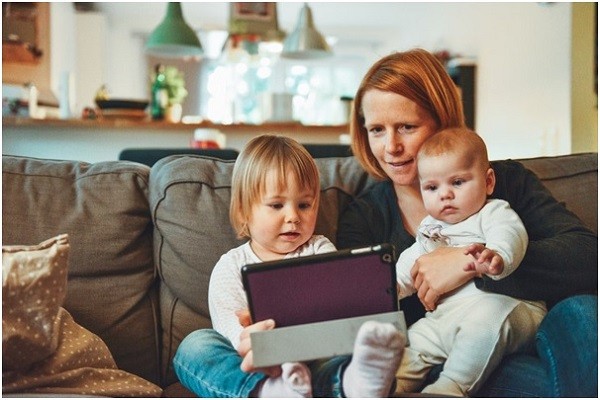Last Updated on January 6, 2025
Screened devices are a common part of everyday activities. From using the self-checkout station at the grocery store to reading your favorite author’s new book on a tablet, time spent using screened devices is more than just the TV or smartphone.
While screens are a part of today’s culture, there are health benefits related to reducing screen time. These include improved physical health, decreased obesity, and more time to explore. We have compiled the best tips for reducing children’s screen time for you.
How to manage children’s screen time?
Children, especially those who spend a substantial amount of time learning on computers and tablets, should prioritize physical activity during designated break times. It is crucial to establish a plan of action for stowing away devices out of sight and engaging kids in alternative activities once the school day concludes. Interestingly, the average duration dedicated to screen time ranges between seven to ten hours.
According to the American Academy of Pediatrics, it is recommended to adhere to the following screen time limits:
- Children under 2 years old should not have any screen time.
- Children between the ages of 2 and 12 should limit their screen time to one hour per day.
- Teens and adults should aim for a maximum of two hours of screen time per day.
#1 Communication
When it comes to technology use, responsible parents often emphasize that it is not an inherent right, but rather a privilege that comes with certain conditions. These conditions can differ from family to family but typically involve a combination of factors such as practicing responsible behavior online (avoiding inappropriate content, being respectful in online communications, prioritizing online safety, etc.), adhering to reasonable time limits for digital media usage, maintaining good academic performance, fulfilling household chores, and actively engaging in healthy offline interests and relationships. It is crucial to establish an ongoing dialogue with your children regarding responsible digital media use in order to foster a safe and balanced online experience.
#2 Be realistic
It is advisable to set smaller and more achievable goals if your children spend excessive leisure time on screens, like watching TV. Rather than immediately aiming for the recommended one to two hours or less per day, it may be more effective to first reduce their current screen time by half.By the way, it is important not only to limit screen time but also to create conditions for the comfortable use of electronic devices. One of the issues parents face is safety. To improve security and enhance your browsing experience, you should use a VPN. For example, to watch UK Netflix from the US or elsewhere in the world, you need a powerful VPN. With it, you can unblock content on almost any streaming service. You can even use the free trial version, VeePN works well with it.
#3 Substitution
An effective solution to managing screen time is encouraging children to engage more in real-world activities. By ensuring they have a busy schedule with school and extracurriculars, naturally, they will have less time available for screens.
Even the commitment of taking kids to sports practice five times a week doesn’t seem so daunting when we consider the positive impact it can have on shaping their environment and future. After all, if they’re not at practice or a game, what else could they be doing? Spending quality time with their Xbox, battling monsters?
#4 Put hand-held devices away
During designated screen-free hours, it is recommended to store electronic devices in a communal area or a charging station in order to minimize distractions and reduce your kids’ focus on them.
#5 Go outside
Engaging in outdoor activities like taking a walk or playing can have a positive impact on your well-being. These activities stimulate the release of endorphins, which promote happiness and help improve both your mental and physical health.
#6 Rewards
One simple principle to remember is to prioritize business before pleasure. In order to earn screen time, it is important to complete tasks such as homework, cleaning the room, eating vegetables, reading books, getting some exercise, and finishing chores. Additional screen time can be earned by completing extra chores as determined by the parent.

#7 Be engaged
After completing school or work, it is highly recommended to dedicate some time every day to engage in meaningful face-to-face conversations with children and provide them with undivided attention.
#8 Create phone-free zones in the home
One way to tackle the challenges of a child’s overactive digital life is by creating phone-free zones in the home. And, where better to start than at the dining table? By making family meal areas a phone-free zone. We can re-establish the habit of engaging in meaningful conversations without any digital interruptions.
Conclusion
The use of digital devices can offer a wealth of educational opportunities and entertainment, but it is important to ensure that these activities do not exceed the recommended screen time limits. By following our advice, you will be able to limit your children’s screen time in a safe and effective manner. Remember, reducing the amount of time spent on screens also offers other health benefits.








